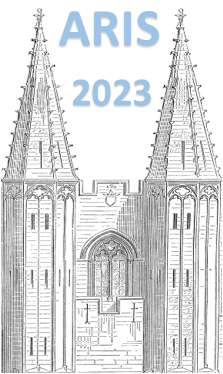Orateur
Description
T. Moriguchi$^1$, R. Kagesawa$^1$, A. Ozawa$^1$, W. Horiuchi$^2$, Y. Abe$^3$, M. Amano$^1$, D. Kamioka$^1$, A. Kitagawa$^4$, M. Mukai$^3$, D. Nagae$^5$, M. Sakaue$^6$, S. Sato$^4$, B. H. Sun$^7$, S. Suzuki$^8$, T. Suzuki$^6$, T. Yamaguchi$^6$, A. Yano$^1$, K. Yokota$^6$
$^1$University of Tsukuba, $^2$Osaka Metropolitan University, $^3$RIKEN Nishina Center, $^4$National Institutes for Quantum Science and Technology, $^5$Tokyo Institute of Technology, $^6$Saitama University, $^7$Beihang University, $^8$Japan Synchrotron Radiation Research Institute
Measurement of reaction cross section ($\sigma_{\rm R}$) is an effective method for investigations of nuclear size properties such as radii and density distributions. In particular, $\sigma_{\rm R}$ on a proton target has the possibility to extract the proton and neutron density distributions separately because of the asymmetry of the nucleon–nucleon total cross sections. However, only a few experimental $\sigma_{\rm R}$ for unstable nuclei on a proton target are reported at this time. It is important to understand collisions between unstable nuclei and a proton from both experimental and theoretical sides. In this study, we measured $\sigma_{\rm R}$ for $^{17}\rm{F}$, which is the proton drip-line nucleus of fluorine isotopes, with a solid hydrogen target (SHT) in a wide energy range. So far, the existence of the proton skin in the ground state of $^{17}\rm{F}$ has been discussed because of the small one-proton separation energy ($S_{\rm p}$=0.6 MeV), but the skin thickness of $^{17}\rm{F}$ is not reported yet experimentally. Experiment has been performed in the Heavy Ion Medical Accelerator in Chiba (HIMAC). Our SHT was developed for $\sigma_{\rm R}$ measurements, and its effective area and maximum thickness are $\phi$50 mm and 100 mm, respectively. From the present experiment, we found that $\sigma_{\rm R}$’s for $^{17}\rm{F}$ on a proton target are almost the same as those of $^{17}\rm{Ne}$, which is known to be a two-proton halo nucleus. These experimental results are very interesting because, in the case of proton-rich nuclei, the decrease of $\sigma_{\rm R}$ on a proton target was reported theoretically despite the increase of the root-mean-square matter radius towards the proton dripline. In this presentation, we will explain the details of the experiment, and discuss the energy dependence of $\sigma_{\rm R}$ for $^{17}\rm{F}$ on a proton target with the Glauber model calculation.

